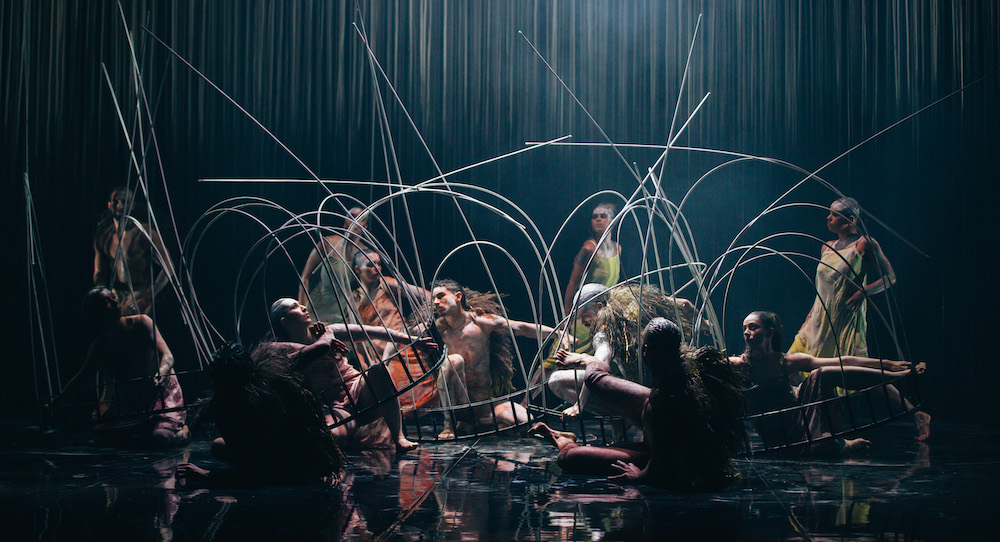Arts Centre, Melbourne.
29 September 2023.
In her first year as the Artistic Director of Bangarra Dance Theatre, Frances Rings was always going to be tested. Stepping into the role vacated by the company’s founding father and longtime guiding light, Stephen Page, and bringing new work to the stage at a moment of highly charged political fracture, have likely made for a fiery baptism. Yuldea is her emphatic, triumphant response.
To make art that is avowedly political is both challenging and limiting. For a piece rooted in the stories and experience of First Nations people to show in the specific and reductive context of the Voice Referendum not only amplifies the potency but increases the risk of disengagement and the likelihood of a short shelf life. In an atmosphere of easy binary, complex responses can be obscured.
If I was afraid that the fine grain of Yuldea would get lost in the smear of dispute, my fears were allayed. Across its 65-minute journey, it coalesces the broad sweep of histories (ancient, colonial, contemporary) into a compelling narrative. Here, dance is the storytelling vehicle. Bodies are the archive of centuries. Millennia. It is a triumph for the artform, as much as for the company and the creatives.
By focusing on the specific experience of Rings’ own ‘mob’, Yuldea draws us into the landscapes and history of the communities of the desert country in the far west of South Australia. As such, we make our way to the life-giving waterhole, before encountering the colonial footprint of trans-continental railways, nuclear tests and Christian missions.
Yet, true to Bangarra’s creative DNA, Yuldea lives now. With a movement lexicon drawing from indigenous dance, ballet, contemporary and even a smattering of Asian gestural forms, the work is charged with a pluralist vigour. Thus, despite its clear narrative structure, the figurative and purely choreographic are never over-written. From a strictly dance perspective, it is athletic and sensuous, with a few acrobatic flourishes thrown in.
However, it is in the creative detail that Yuldea shines brightest. As movement phrases are repeated, they are cleverly re-contextualised. First, beautiful, spiritual. Then, excruciating, contorting. Now, a chain. Later, the thread that connects. Same action, different story. One scene, many lenses.
Add to this the masterful staging. Elizabeth Gadsby’s set has a disciplined power, creating visual and story effects that augment the arc of the dance. And driving it all, a pulsing, cinematic score that moves much like a well-crafted DJ set, mesmeric and ultimately uplifting.
Beyond the spectacles of artistry and technique, though, something subtle, like a whisper in the throng of political noise. There is a bittersweet moment in Yuldea – about two-thirds in – when the veil is lifted and the discomforting conundrum of Bangarra’s practise is briefly revealed. Which is where we sit. The principally non-indigenous audience, buying the artefacts of a culture we have subsumed. Like their forebears in the South Australian desert, Rings & Co are the sellers, bartering history for survival. I do not know if this was deliberate, or an upwelling from Bangarra’s unconscious unease, but I for one was struck. In truth, it was the most powerful and moving aspect of the evening.
History is so often recounted in blunt terms, and critiques like this in star-rated simplicity, but there are occasions in art when something more than aesthetics or stated intentions become evident. Whether by accident or design, Rings held the door ajar long enough for a question more confronting than middle class guilt or pressing than academic exactitude to be quietly asked. What are we doing here? Why do we treat each other this way?
However we choose to answer, what Bangarra has reminded us is art may be the best available language.
By Paul Ransom of Dance Informa.

















